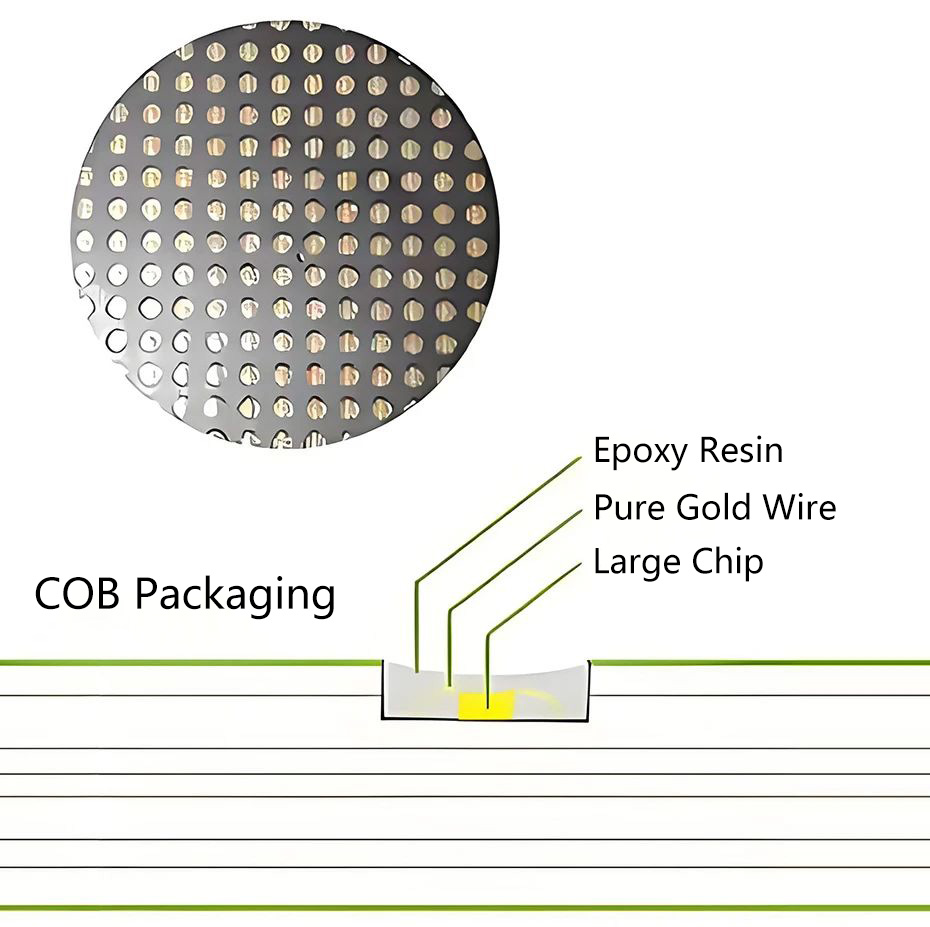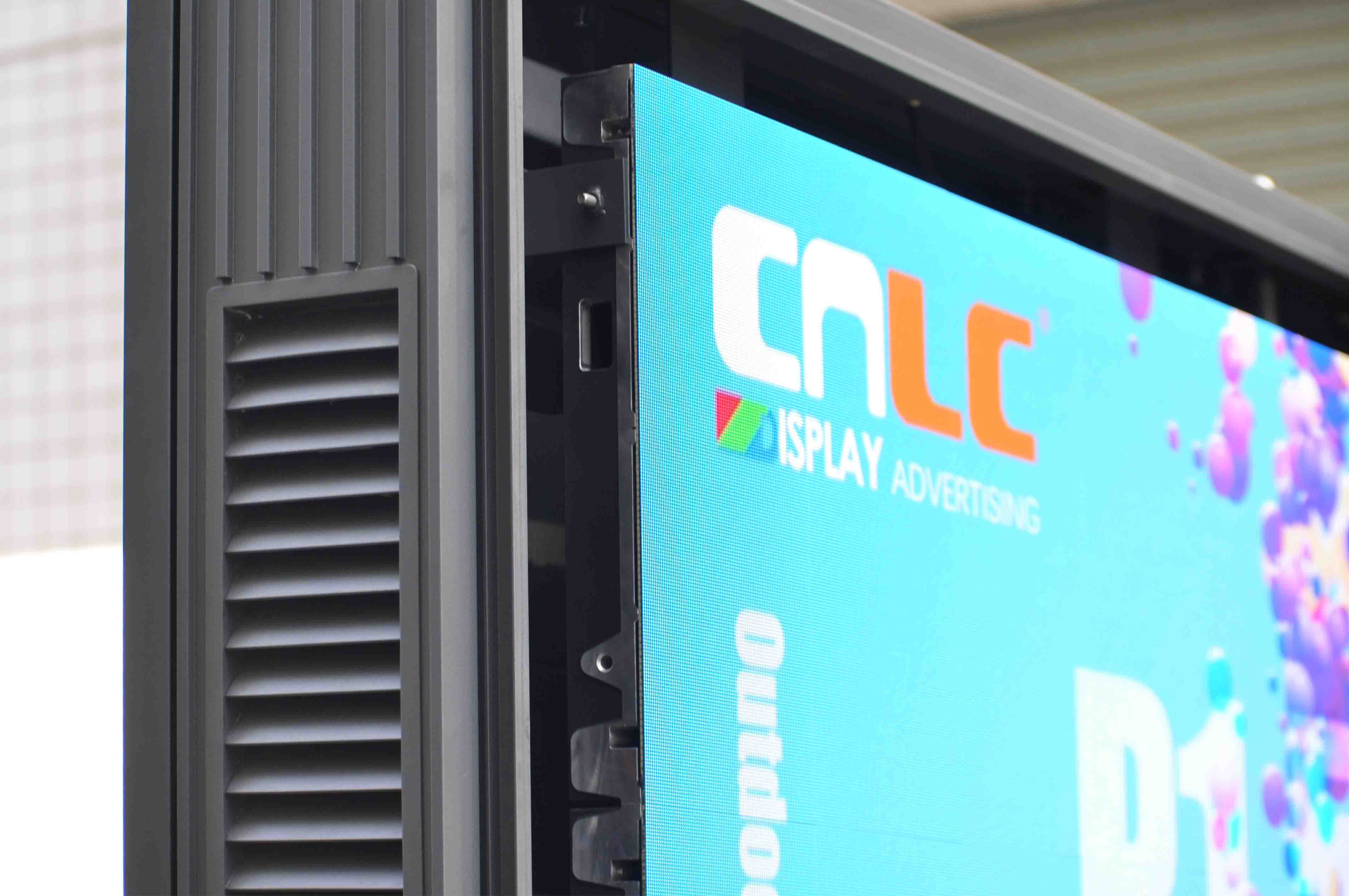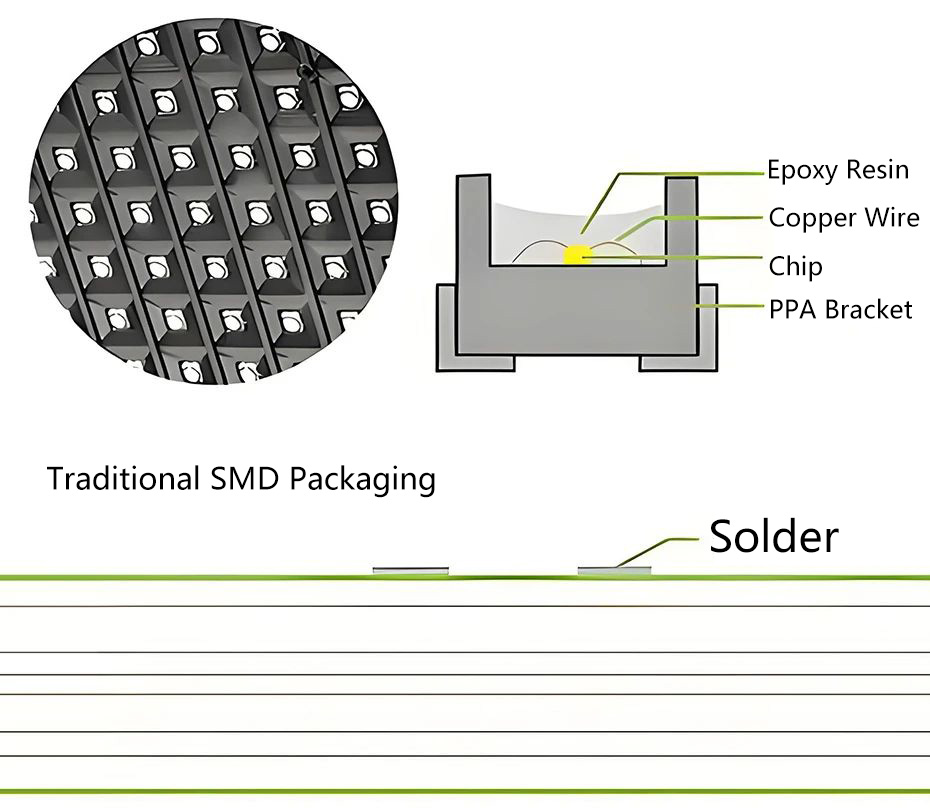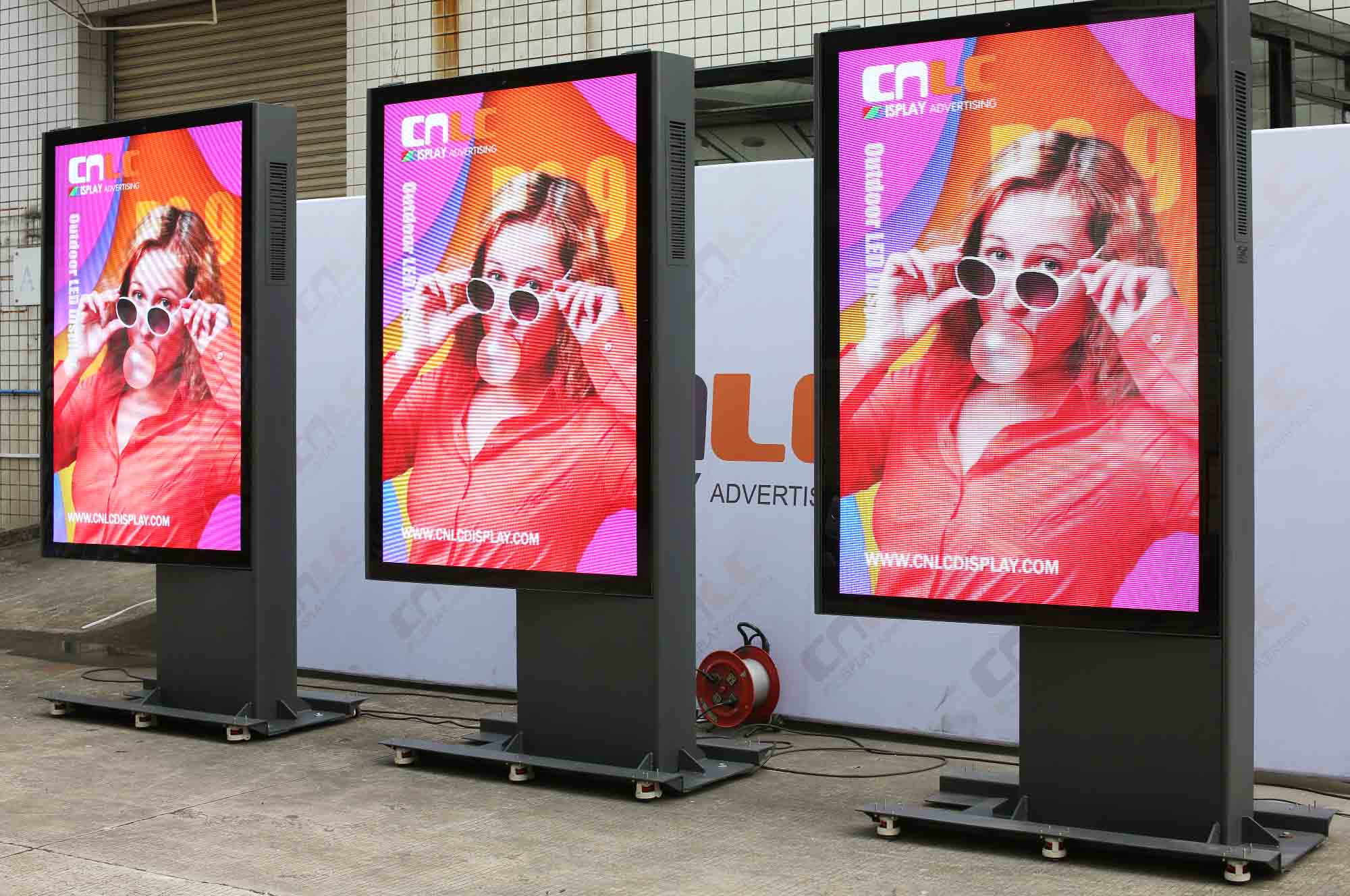A 3-Minute Guide to Gold and Copper Wire Bonding in LED Displays
In the manufacturing of LED display screens, gold wire and copper wire play crucial roles. These wires are responsible for connecting the electrodes on the chip's surface to the supporting frame. When electricity flows through these wires, it powers the chip, causing it to emit light. Therefore, the quality of the wire directly affects the performance and lifespan of the LED display. How do we choose between "gold wire" and "copper wire" in this ongoing technological debate? This article will take you through an in-depth understanding of these two packaging technologies and their respective characteristics.
1. What is Gold Wire Bonding?
Gold wire bonding refers to the technology of using gold wire as a conductive material to connect the chip electrodes to the frame in the LED packaging process. Gold wire offers excellent electrical conductivity and oxidation resistance, making it widely used in high-end LED packaging. This technology significantly enhances the reliability and lifespan of LED displays, especially in environments with high humidity and corrosion.
LED display screens with gold wire bonding are commonly used in high-end applications, such as outdoor billboards and large indoor displays, where high image quality, stability, and durability are crucial. Common models include P5, P3, P2.5, P2, P1.667, which are particularly suitable for ultra-high-definition small-pitch LED screens.

2. Which LED Display Models Use Gold Wire Bonding?
LED displays using gold wire bonding are usually high-end products that require long lifespan and stability. For example, a P1.667 small-pitch LED display may use gold wire-bonded SMD1010 LED lamps paired with a high-refresh-rate driver IC, delivering a delicate and clear display with an ultra-wide viewing angle. The lightweight aluminum frame design not only facilitates installation but also saves on transportation costs, making it ideal for high-end display applications.
3. What is Copper Wire Bonding?
Copper wire bonding involves using copper wire to connect the chip electrodes to the frame. Due to its lower cost compared to gold wire, copper wire bonding is widely adopted in mid-range and low-end LED display screens. With technological advancements, copper wire bonding has gradually overcome some initial technical challenges, such as improving conductivity and welding stability. However, copper wire is still inferior to gold wire in terms of oxidation resistance and mechanical performance, meaning it may not be as durable in harsh environments.
4. Which LED Display Models Use Copper Wire Bonding?
Copper wire bonding is often used in mid-range and low-end LED display screens, such as P1.25, P1.53, P1.66, P1.86, P2.0, P2.5, P3, P4. These models are commonly used in indoor home displays, small advertising screens, or in large-scale outdoor applications where cost control is crucial and the requirements for longevity and stability are relatively lower.
5. Differences Between Gold Wire and Copper Wire Bonding
-
Cost: Gold wire bonding has a high cost, primarily due to the expensive nature of gold wire. Copper wire bonding is less costly and is the preferred choice for many cost-sensitive applications. The cost of copper wire is typically only one-third or even less than that of gold wire, which presents a significant cost advantage for large-scale production of LED display screens.
-
Oxidation Resistance: Gold wire offers superior oxidation resistance, maintaining a stable connection in harsh environments. In contrast, copper wire is more prone to oxidation, which can result in poor connections or metal deformation, affecting the product's quality and lifespan.
-
Weld Point Contact: Gold wire bonding excels in weld point contact, ensuring a stable connection between the chip and the frame. Due to its material characteristics, copper wire may not easily bond tightly with the frame, and the weld points can be prone to cracking or damage, impacting reliability.
-
Thermal Conductivity: Copper wire has better thermal conductivity than gold wire, which helps in rapid heat dissipation in high-power LED applications, improving the display's efficiency and stability. However, in most LED display applications, electrical conductivity and oxidation resistance are usually more critical factors.
6. How to Choose Between Gold Wire or Copper Wire Bonding?
When choosing between gold wire or copper wire bonding, it is essential to consider the actual application scenarios and performance requirements. For high-end applications that require high reliability and a long lifespan, gold wire bonding is the better choice, such as for large outdoor billboards and premium indoor displays. For cost-sensitive applications or mid to low-end markets, copper wire bonding is more attractive due to its cost advantages.
Conclusion
Both gold wire bonding and copper wire bonding have unique advantages and application scenarios. As technology continues to advance and costs keep optimizing, these two packaging technologies will continue to play essential roles in the LED display screen industry. Understanding their features and differences will help us choose the right LED display products for our needs, promoting healthy industry development.


